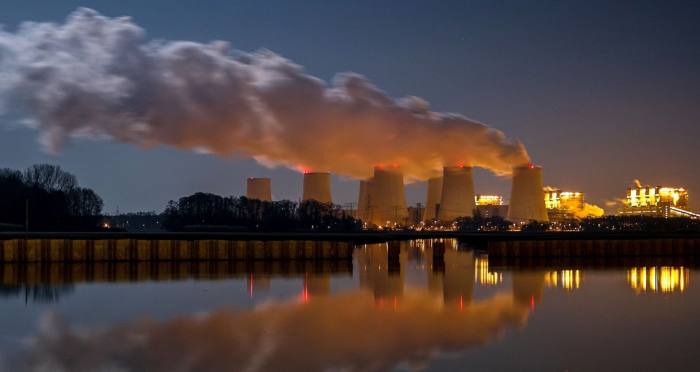UK carbon trading system likely to lead to government intervention, traders warn
The UK’s effort to put a price on carbon pollution through a new trading system that launches this week is likely to lead to government intervention to reduce the cost to companies within months, traders have warned.
Pent-up demand and the UK’s strict emission targets are expected to lead to a sustained rally in the price of carbon credits on the UK Emissions Trading Scheme (ETS) when it goes live on Wednesday.
Under its rules, the government must consider measures to reduce the cost of allowances that companies have to buy to offset their emissions if they consistently trade at more than double their average price of the previous two years.
Because there is no domestic carbon price, the government has used the established EU emissions trading scheme, which British companies were part of for almost 15 years, to set the trigger price for intervention.
The government last week set the threshold at £44.74 a tonne, or about €52 a tonne, based on EU prices between May 2019 and December 2020. But this is below the current cost of EU allowances, which hit a record of €55 a tonne last week, after a strong, sustained rally this year prompted by governments upping their climate commitments. When the UK left the EU system five months ago the price was closer to €30 a tonne.
Carbon traders and analysts said UK prices were likely to rise sharply when trading began — driven by strong demand and the limited number of allowances initially set to be auctioned — to close to or above that of the EU market. The government raised the price floor, the minimum that credits can be sold for at auctions, from £15 to £22 a tonne this year.

The British system had been closely modelled on the EU carbon market, but there are key differences, analysts said. The UK has a stricter national emissions reduction target and while the EU system also has a market intervention mechanism, it is based on prices rising to three times, rather than twice, the rolling average.
The UK reduced the trigger limits for the first two years of the scheme to address concerns that as it serves a smaller market than its EU counterpart it could suffer greater volatility.
“The EU price will be a reference point for the UK ETS . . . [and] is not showing any signs of weakness,” said Ingvild Sorhus, lead analyst at Refinitiv Carbon Research. If EU prices continued “skyrocketing”, the UK’s intervention mechanism was likely to be triggered, she said.
The carbon price “is going in one direction”, said Matt Finch, UK policy manager at campaign group Transport and Environment.
The government declined to comment on the possibility of intervention.
UK-based utilities and industrial groups have continued to trade EU carbon allowances, using them as a proxy to hedge their exposure ahead of the launch of the UK system. Analysts expect them to sell their EU credits and replace them with UK ones.
Tom Lord, head of trading at Redshaw Advisors in London, said UK utilities “that have hedged themselves with EU allowances for their forward power sales will be desperate to swallow up as many of the UK allowances as they can to cover themselves”.
The UK ETS is designed to raise the cost of polluting over time, and is seen as a key pillar of the UK’s plans to tackle climate change.
Any intervention would be triggered if the average price remains above £44.74 a tonne for three consecutive months. It would prove embarrassing for the British government, which has positioned itself as a global leader on green issues and is set to host the COP 26 UN climate conference in November.
Mark Lewis, chief sustainability strategist at BNP Paribas Asset Management, said such early intervention by the government might also “raise eyebrows about its commitment to allowing market forces to determine the price commensurate with its ultimate policy objective of net zero”.
End users have expressed concern about the lack of liquidity in the UK ETS and the impact that hedge funds and other speculators, which have become more interested in carbon trading, might have on the nascent scheme.
Steve Freeman, director of energy and environmental affairs at the Confederation of Paper Industries, warned of “fiscal speculators driving a new and illiquid UK allowance market to unrealistically and unaffordable high prices in a short time”.
Linking the UK and EU systems, an option that the government has not ruled out, would “damp down price fluctuations”, he added.
But Kwasi Kwarteng, the UK business secretary, told the Financial Times earlier this month he believed the concerns about the new market were overstated. “There were fears it would be too illiquid and too small but I don’t think that’s borne out by the facts,” he said.
Additional reporting by Henry Sanderson in London
Follow @ftclimate on Instagram
Climate Capital

Where climate change meets business, markets and politics. Explore the FT’s coverage here